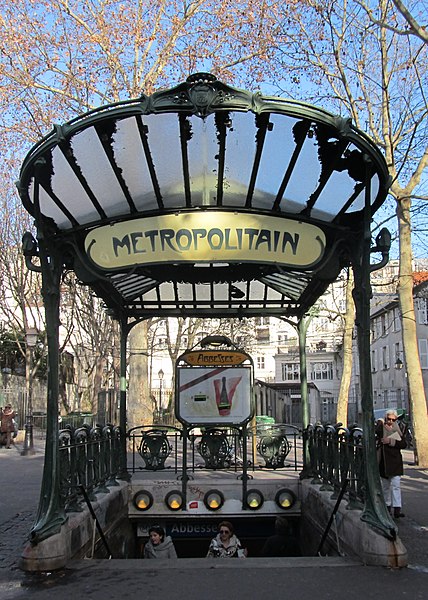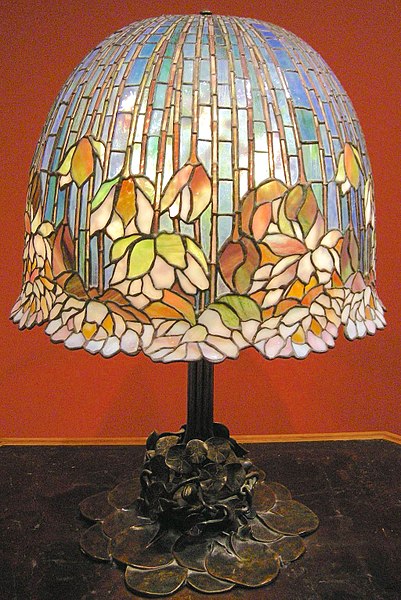Henry Clemens van de Velde was a Belgian painter, architect, interior designer, and art theorist. Together with Victor Horta and Paul Hankar, he is considered one of the founders of Art Nouveau in Belgium. He worked in Paris with Siegfried Bing, the founder of the first gallery of Art Nouveau in Paris. Van de Velde spent the most important part of his career in Germany and became a major figure in the German Jugendstil. He had a decisive influence on German architecture and design at the beginning of the 20th century.
Henry van de Velde; portrait by Nicola Perscheid (1904)
Ghent, Belgium: Boekentoren of Ghent University (to the right.)
Chair designed for house "Bloemenwerf", 1895
Villa Hohenhof in Hagen
Art Nouveau is an international style of art, architecture, and applied art, especially the decorative arts. It was often inspired by natural forms such as the sinuous curves of plants and flowers. Other characteristics of Art Nouveau were a sense of dynamism and movement, often given by asymmetry or whiplash lines, and the use of modern materials, particularly iron, glass, ceramics and later concrete, to create unusual forms and larger open spaces. It was popular between 1890 and 1910 during the Belle Époque period, and was a reaction against the academicism, eclecticism and historicism of 19th century architecture and decorative art.
Image: Abbesses
Image: Otto Eckmann Jugend Nr. 14, 1896
Image: Louis comfort tiffany, lampada da tavolo pomb lily, 1900 10 ca
Image: Louis Majorelle Wall Cabinet Walters 6587








